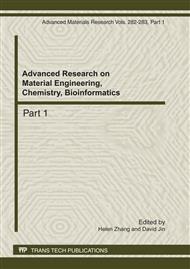p.637
p.641
p.646
p.650
p.654
p.658
p.662
p.666
p.670
Study on the Effect of Different Rear Windscreen Angles on Aerodynamic Characteristic of the Automobile
Abstract:
The automobile resistance reduction problem is the major topic in the automotive industry because of its link with economy and safe. Taking Computational Fluid Dynamics software as the platform, the automobile as the research object, the simulation models are established based on unsteady, viscous Reynolds averaged k-ε equations, by using dynamic grid and finite volume method. The aerodynamic characteristics of the automobile were studied with the different rear windscreen angles, such as 30°,35°,40°and 45°respectively. Analysis of trailing vortex automobiles for resistance. The results show that the different angle of the rear window, the flow separation and re-attachment points for the different, the resistance coefficient is also different. The conclusions of analysis provide the theoretical foundation for styling optimization of automobile,it is of certain guiding significance for practical application.
Info:
Periodical:
Pages:
654-657
Citation:
Online since:
July 2011
Authors:
Price:
Сopyright:
© 2011 Trans Tech Publications Ltd. All Rights Reserved
Share:
Citation:


